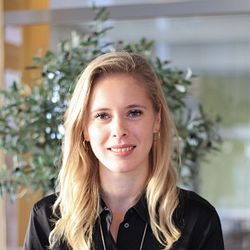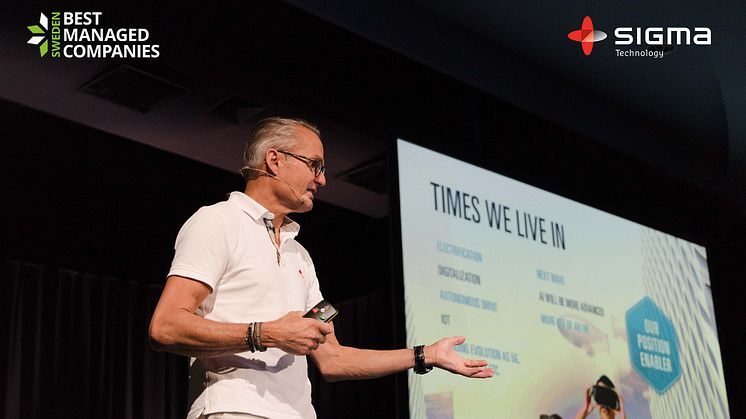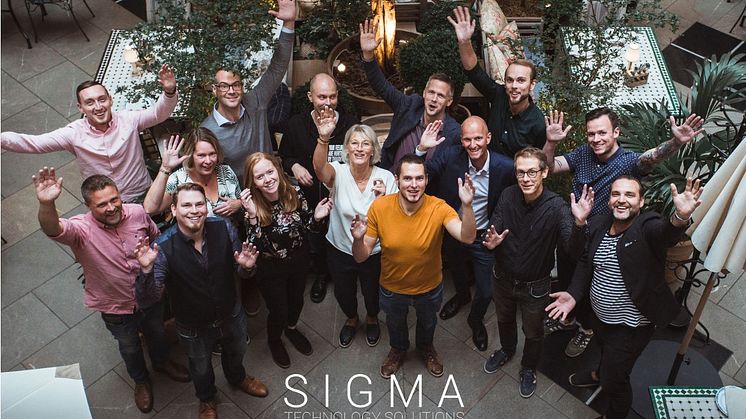
News -
Report from IoT 2020: Using Data to Reduce the Carbon Footprint
The 10th International Conference on the Internet of Things (IoT 2020) gathered international researchers and IoT industry representatives sharing, discussing, and witnessing cutting-edge research in all development areas for the Internet of Things. As a tech-savvy company with deep IoT and Artificial Intelligence expertise, Sigma Technology joined the conference to share important ways of using data for the sake of sustainability.
October 5 to 9 were intensive days for computer scientists, software engineers, and interaction design specialists working or interested in IoT technology. Participants enjoyed workshops and speeches covering the topics of Artificial Intelligence, energy consumption, software engineering, networking, and system support as applied in IoT.
One of the presenters during the online Industry Day within IoT 2020 was Jonas Tillström, Business Area Manager Digital Services at Sigma Technology Solutions. Jonas addressed a fascinating issue – how far electronic waste needs to travel for recycling and at what cost to the environment. More importantly, he offered a solution to make this process more efficient.
The demo was based on a project for EL-Kretsen, a nonprofit organization acting as Sweden's official responsible for collecting electric and electronic equipment waste (e-waste). El-Kretsen works closely with every municipality in Sweden and 30 transportation companies to manage most of all the e-waste in Sweden. Once the e-waste is collected, it is taken to a dedicated recycling center, often traveling many kilometers.
Since El-Kretsen is dedicated to making their business sustainable, they wanted to reduce one of their few environmental footprints. During the transportation of e-waste, 3,500 tonnes of CO2 emissions are released annually. The team from Sigma Technology Solutions teamed up with Chalmers Industriteknik and El-Kretsen at the 2020 SAS® Nordic Hackathon to find optimal transportation routes for e-waste to reduce related CO2 transportation emissions.
Jonas told how the team from Sigma Technology Solutions imported data into SAS® Viya®, compared routes, and visualized the outcome in a suggested optimal route on a map. This map uses GPS coordinates of all e-waste collection points and shows where it is ready for pick-up. The transportation company can optimize the planning of its daily collection routes according to demand and thus cut costs and carbon emissions.
The result is that El-Kretsen can save 836 tonnes of CO2 emissions and 329.000 liters of fuel per year due to optimal routes planning.
"The route optimization algorithm we developed can be applicable to a wide range of industries that performs transportation in some way, including distribution and e-commerce companies. The algorithm can also help optimize deliveries and returns. The importance of optimizing business processes is now more relevant than ever. What makes our solution unique is that it both helps to make operations more efficient and sustainable," shares Jonas Tillström.
Sigma Technology team is now developing the optimization algorithm further and creating a mobile app that would help transportation companies and drivers select the most efficient and sustainable routes.
For more information, please, visit sigmatechnology.se/digital.
Contact:
Robert Åberg, CEO at Sigma Technology Insights, robert.aberg@sigmatechnology.se.
Jonas Tillström, Business Area Manager Digital Services at Sigma Technology Solutions, jonas.tillstrom@sigmatechnology.se.





